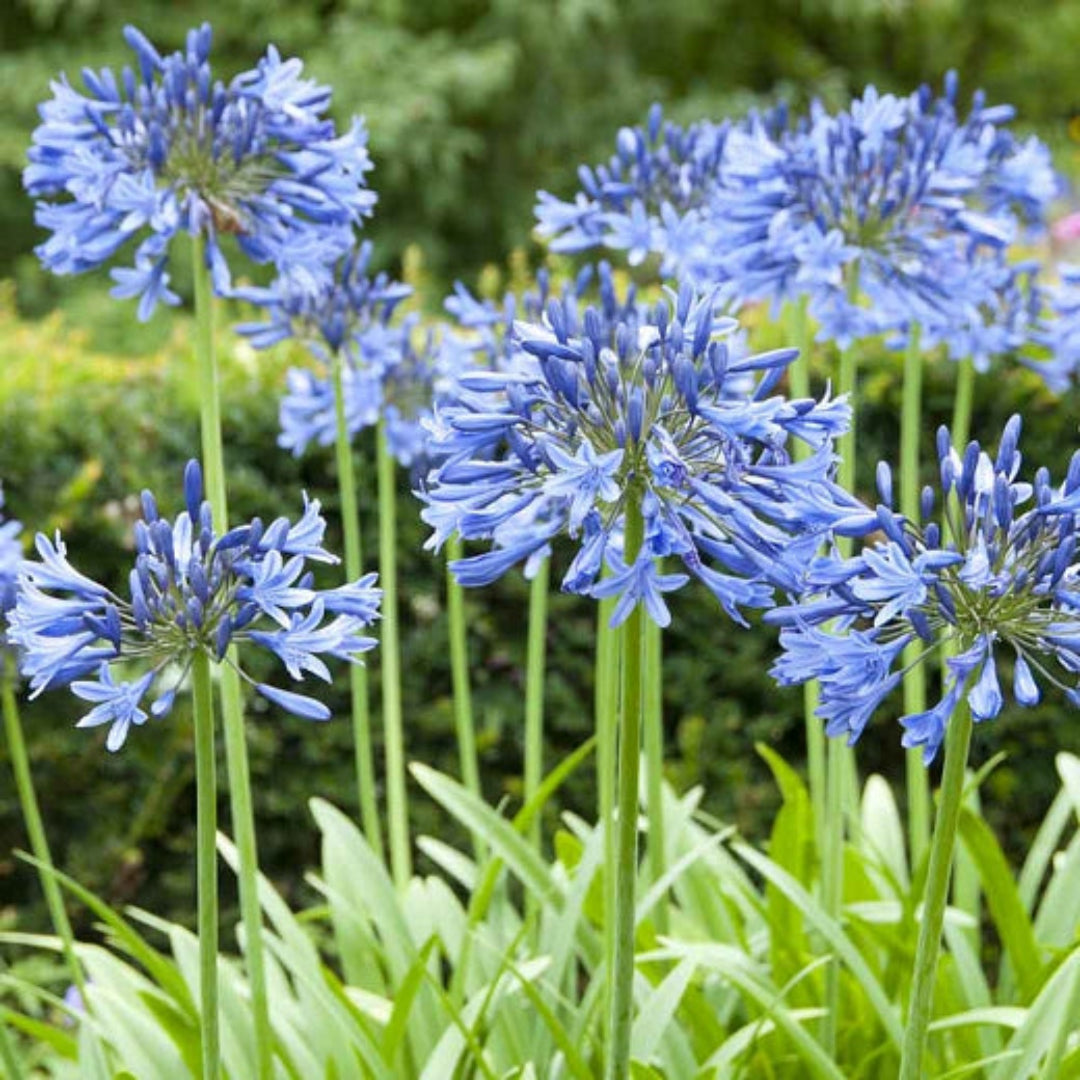Mastering the Art of Agapanthus Treatment: Necessary Actions for Healthy Growth and Vibrant Blossoms
In the realm of cultivation, the cultivation of agapanthus stands as a fulfilling venture for those who look for to support these elegant blooming plants. With their striking blossoms and elegant foliage, agapanthus has captured the focus of garden enthusiasts worldwide. Nonetheless, achieving optimum growth and lively blooms calls for a nuanced technique that includes various crucial actions. From picking the right variety to mastering pruning methods, the trip towards cultivating growing agapanthus plants is complex and holds the key to unlocking the full possibility of these agricultural treasures.

Picking the Right Agapanthus Variety

When picking the appropriate Agapanthus range for your garden, consider variables such as climate viability, bloom shade, and development practice. In addition, take into consideration the environment in your region to ensure the Agapanthus range you choose can prosper in your details problems. Comprehending the growth habit of various Agapanthus varieties is critical for correct placement within your yard.
Suitable Planting Problems
Thinking about the ideal environmental needs is vital for effective Agapanthus cultivation. Agapanthus grows in well-draining soil with a somewhat acidic to neutral pH degree. When planting, select an area that receives full sunshine to partial color. In hotter environments, supplying some mid-day color can stop scorching of the fallen leaves. Agapanthus plants are sensitive to cool temperatures and should be shielded from frost during winter season.
To make certain healthy development and dynamic blooms, plant Agapanthus bulbs at a deepness of concerning 2-4 inches and area them 8-12 inches apart. Mulching around the base of the plants assists maintain dampness and suppresses weed growth.
Watering and Feeding Tips
Maintaining proper dampness levels and offering necessary nutrients are vital elements in the treatment routine for Agapanthus plants. When it comes to watering Agapanthus, it is important to strike an equilibrium. These plants choose consistently moist dirt but are prone to root rot if overwatered.
Feeding Agapanthus is essential for advertising healthy development and respected blossoms. Apply a balanced plant food, such as a 10-10-10 formula, in the early springtime as brand-new growth emerges. Repeat this application every 6-8 weeks throughout the expanding period. Prevent excessive fertilizing, as it can result in rich vegetation at the cost of flowers. Constantly comply with the producer's guidelines for correct dilution and application techniques. By complying with these watering and fertilizing ideas, you can guarantee your Agapanthus plants thrive and generate vivid, long-lasting flowers.
Trimming Methods for Agapanthus
Pruning Agapanthus plants at the suitable times and with appropriate techniques is important for keeping their health and promoting optimum growth and blooming. The suitable time to trim Agapanthus remains in late wintertime or very early springtime before new growth emerges. Beginning by removing any kind of yellowing or dead leaves near the base of the plant. Cut them as close to the ground as feasible without harming the arising shoots.
Deadheading invested flowers can also redirect the plant's energy into creating more blossoms rather than establishing seeds. If you want to accumulate seeds for propagation, leave some flowers to mature and dry on the plant.
Keep in mind to use tidy, sharp tools to make accurate cuts and decrease the threat of introducing conditions. Agapanthus. Routine trimming will assist keep your Agapanthus looking healthy and cool while guaranteeing a plentiful display screen of beautiful look at this website blooms
Handling Common Bugs and Diseases
After guaranteeing correct pruning strategies for Agapanthus, it is vital to attend to typical parasites and illness that can influence the health and wellness and vigor of these plants. Agapanthus plants are normally hardy yet can still succumb specific problems. One usual bug that affects Agapanthus is the Agapanthus gall midge. This small, orange fly lays its eggs in the foliage, causing altered growth and blossom buds that fall short to open. To battle this insect, trim and ruin any kind of afflicted plant components and take into consideration using insecticidal soap. Learn More Here
Additionally, Agapanthus plants can suffer from root rot if they are grown in improperly draining pipes soil. By being alert and taking prompt activity versus illness and bugs, you can assist your Agapanthus plants prosper and generate vivid flowers. Agapanthus.

Final Thought
In final thought, grasping the art of agapanthus treatment includes choosing the best range, supplying perfect planting problems, appropriate watering and feeding, proper pruning methods, and dealing with usual pests and diseases. By adhering to these necessary actions, you can guarantee healthy growth and vivid flowers for your agapanthus plants. Remember to on a regular basis check and preserve your plants to promote their total wellness and durability.
To make certain healthy development and vivid flowers, plant Agapanthus bulbs at a deepness of about 2-4 inches and room them 8-12 inches apart. By adhering to these watering and fertilizing tips, you can guarantee your Agapanthus plants prosper and produce lively, resilient flowers.
One typical parasite that impacts Agapanthus is the Agapanthus gall midget. Furthermore, Agapanthus plants can suffer from root rot if they are planted in poorly draining dirt. By complying with these crucial visit this page steps, you can guarantee healthy development and vivid blossoms for your agapanthus plants.